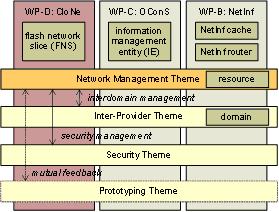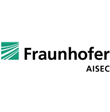Below is the 5th quarterly newsletter from the SAIL project. A printable, PDF, version of the SAIL newsletter #5 can be downloaded here.
You can subscribe to the quarterly newsletters from SAIL by entering your email address in the form below.
1. Editorial
Advancing into 2012, it is time to summarise the latest leg of the SAIL voyage. The SAIL schooner is out on open waters again after some well-deserved rest at the dock after a successful 2011, ready to set loose again for the final phases of our project. That all crew members have made an excellent job in 2011 is evident when looking at all the produced deliverables, submitted publications and gained publicity from SAIL – you deserve a big and honest Thank You!
In a large collaboration project like SAIL, the journey cannot always be smooth. From time to time, you will be forced to adjust the course and take corrective actions, in order not to end up on shore. But isn’t that usually the case if you want to challenge and make a difference? It is part of the adventure, and in order to stay in the lead, you will have to – at all times – be receptive to input from your surrounding and re-assess your mission based on what the situation looks like for the moment. Yet stay calm enough to not loose sight of the horizon and the overall goals voyage.
In projects, as well as in sailing, you sometimes have to adjust your ambition level to the externalities. On a boat you do it by taking in on the sails, limiting the area of sailcloth facing the wind. In a project, you do it by adjusting your ambition level so that you keep a manageable scope, avoiding drowning under the work burden.
We have shown that we have what is required to balance on the crest between our partners’ interest and the best for SAIL. I feel confident that we together will succeed, and that we will come out of the current troubled waters stronger than ever!
Having in mind the recent 4th General Meeting at IST, in Lisbon, Portugal, on Jan. 23rd/27th, and looking into the immediate future, the project is now in the phase of detailing the architecture in the respective Work Packages (WPs). A lot of focus during the meeting was spent on harmonising the view of how Cloud Networking (CloNe) and Network of Information (NetInf) will utilise selected mechanisms from the Open Connectivity Service suite (OConS) for providing their services. Main highlights though were the first internal demo event, where the concrete prototyping work being done within SAIL was shown-off to all project members. In this issue of our newsletter, you will get a glimpse of it as well. Curious about more? Remember to always check out the Sailors’s Inn blog for latest updates from the project!
Enjoy the reading.
Thomas Edwall (Project Manager)
Benoit Tremblay (Technical Manager)
2. Under the Spotlight:
Focus on the Prototyping Theme
One of the highlights of the meeting week in Lisbon was the internal demo event and workshop. The time had come when prototypes that are being worked on across the project were showcased to everyone within the project. No less than 12 demo stations, 4 from each technical WP, were set up around the topics of NetInf, OConS, and CloNe. It was great to see many of the concepts, which previously have been explained in presentations and deliverables, in real life. Thus, it made it easier to grasp technical aspects and details, and to understand the concepts turned into code. An inspiring start of the project’s last year.
Tuesday was the main demo day, with a plenary session where all demo teams gave a quick overview of what they were about to demonstrate. The session was introduced by Michael Soellner, Theme Leader for prototyping. Next it was time for the demos. Everyone within the project walked around and explored all the demo stations. As expected, all demos worked, but as we all know – anything can happen during a demo. The opportunity to discuss details and ways to further evolve the concepts and to cooperate was well used until Wednesday noon.
Furthermore, we took the opportunity to capture all demos on video. We will now take some time and edit the raw material into separate movies. Keep your eyes on the Sailor’s Inn blog and on the main SAIL web site, where the video clips will be presented.
During the meeting, the Prototyping Theme started to discuss first conclusions from the internal workshop, and the next steps in preparing the future public demonstration events. The description of the planned demonstration scenarios and the cooperation will be published in a deliverable in Apr. 2012.
3. Inside SAIL:
News from WPs and Themes
WP-A: Impact and Collaboration Enabling (ICE)
In June, starting on the 25th, SAIL will arrange a Summer School, in Santander, Spain, where students from across Europe are invited. More information will follow, so stay tuned.
In the socio-economics area, the work continues to identify and understand the new and existing business models, and how they may affect SAIL technologies. As part of this work, the WP has compiled a document with business requirements, including business, social and regulatory aspects. This document will, as a next step, be reviewed by all technical WPs.
Google launched its social network Google+ a few months ago, and SAIL was fast to establish a presence there. If you are using Google+, take the opportunity to add SAIL to your circles.
WP-B: Network of Information (NetInf)
WP-B is developing an Information-Centric Networking (ICN) architecture, with a focus on support for heterogeneous technological and administrative domains. This work is now concentrating on prototyping – we are developing different components for NetInf networks and starting to put them together in application scenarios. For that, we are producing specifications for different components of the system, which we are continuously sharing with the community. For example, we have designed the NetInf name format in a way that it can be useful for different applications and systems that have to provide name-content integrity. We have submitted the corresponding specifications to the IETF to ensure broader review and to offer them as enablers for in-network storage applications in P2P and CDN deployments. The specifications are available as draft-farrell-decade-ni and draft-hallambaker-decade-ni-params. We are also applying this process to other components, such as the NetInf protocol and its specific mappings to underlying networks.
The prototyping work is progressing fast: there are several different NetInf implementations under development, such as the OpenNetInf Open Source implementation from Paderborn University, a NetInf implementation for next-generation routers from NEC, a NetInf-based localised CDN system from NSN, and a NetInf implementation for challenged networks based on the Delay-Tolerant Networking architecture from Trinity College Dublin. Some of these implementations have been show-cased at the SAIL internal demo event.
WP-C: Open Connectivity Service (OConS)
WP-C goal is to provide Open Connectivity Services using novel and enhanced networking mechanisms that are beneficial to end-users and their applications (e.g., higher QoS/QoE and with the most adapted connectivity), as well as to network operators (e.g., more efficient usage of the network resources).
The Future Internet will come with many challenges to cope with, and the deficiencies to overcome are countless; thus, appropriate Connectivity Services need to be deployed and instantiated using an overall framework, flexible and open enough to accommodate existing and upcoming mechanisms and networking technologies. Accordingly, we have further advanced with the specification of the OConS architectural framework, where our effort was put on the design of the orchestration functionalities; in fact, to serve a given application request, this orchestration is needed in order to dynamically configure and instantiate a set of OConS mechanisms, functional entities and their associated protocols.
In parallel, prototyping activities were carried on to show OConS benefits and to demonstrate enhanced connectivity services, such as OConS multi-path support for NetInf, OConS multi-p* access with dynamic distributed mobility management, and OConS for autonomous Data-Centre interconnection.
WP-D: Cloud Networking (CloNe)
As per WP-D objectives, we are well on track to build an architecture for Cloud Networking that includes management and security aspects. Normally, cloud computing infrastructure-as-a-service offerings are implemented in large data centres that are made accessible via Internet. We envisage a move to compute and storage resources, as well as virtual network and connectivity services, distributed throughout operator networks and managed using infrastructure-as-a-service principles, allowing services to scale out of the data centres, on-demand, for distribution, for proximity to users, and for seamless connectivity across sites.
Architecture of cloud networking allows scalable and on-demand provisioning of compute, storage and networking resources in the same time frame and via the same interface. In the CloNe architecture, data centres and network operators communicate through the Open Cloud Networking Interface (OCNI), an extension of OCCI that incorporates our networking concepts. Goal translation, fault management, and resource management are integral parts of our solution.
Having created the first draft of the CloNe architecture, we have focused on prototyping different elements of this architecture and prepared for the demonstration of “creation of a Flash Network Slice (FNS)”.
This is to evaluate the new concepts over a test bed that includes multiple operator networks and data centres, all managed by different providers. On-demand creation of FNS is being prototyped over a WAN using current network technologies, MPLS-based VPNs, as well as emerging technologies, like Openflow. These FNS interconnect tenant cloud slices in OpenStack – and OpenNebula – based cloud data centres, utilising new network virtualisation techniques, modified with extensions for interconnecting over WAN. We will continue working toward refining the CloNe architecture based on new findings through prototyping.
Prototyping and Experimentation Theme
Under the spotlight in this issue.
Security Theme
During the first year of the project, the Security Theme has been supported by all WPs according to these objectives and shared view of the security and privacy considerations with all WPs. In this period security objectives and privacy concerns were gathered that are inherent to the WP research topics.
The WPs are now turning to the more practical issues, i.e., preparing implementations and developing solutions that shall satisfy the security requirements, which were identified on the architectural level. An example in the context of CloNe is a policy enforcement for network resource usage, such that customers of data centres are enabled to manage networking aspects of cloud computing. The main security implementation example on NetInf is the name data integrity section for Named Information (ni) URI Scheme proposed in a recent IETF ID.
On the basis of such implementations, in the future the Security Theme will be able to assess security objectives and privacy concerns.
Network Management Theme
Since the publication of its first deliverable, the Network Management theme has been refining the proposed draft of its management architecture. To this end, the theme has communicated its management guidelines and use cases to the WPs for their consideration and analysis. This is the first of a number of iterations to achieve convergence towards an overall management framework.
Complementary, interactions with other themes were launched according to the figure, to address broader management questions related to interdomain and security management. The NWM theme has also initiated feedback with the prototyping theme in order to harmonise management concepts and their implementation.
Interprovider Theme
The first year of SAIL was a challenge for the Inter-Provider Theme. Most of the WPs had little or no awareness about domains and what their impact might be on their design, and a flat network design was envisaged.
This has changed completely by the end of the first year of the project. All WPs analysed what flavours of domains they need to explore in order to provide a sound conceptual model and practical implementations, so several WPs are exploring technology domains within their implementations. Administrative domains have also been identified as an important topic to explore further.
Cross-theme work has also been started. The Security Theme is contributing to the domain discussion and is providing significant contributions when identifying the borders of administrative domains.
4. Looking Outside:
Views on SAIL
ICN WS at SIGCOMM 2011
WP-B co-organised the well-received ACM SIGCOMM workshop on Information-Centric Networking in Toronto, Canada, Aug. 19th. WP-B Leader, Dirk Kutscher, was TPC chair and WP-B members presented their work at the workshop.
Regulatory Workshop
Ericsson and SICS organised on Sep. 2nd a Regulatory Workshop on Information-Centric Networking (ICN) in Stockholm, Sweden. The first one of its kind in Sweden, similar workshops have been held also in Finland by other SAIL partners, and follow-up workshops on European level are being planned. The goal was to give an overview of the characteristics of ICN technology compared with today’s Internet one, provide an overview of the current legal and regulatory landscape and trends and “hot” issues, identify potential conflicts between ICN technology and the current legal and regulatory framework, and to start an open discussion on how regulations and technology can be made to evolve in a symbiotic way instead of an antagonistic one. Presentations are available on SAIL SlideShare.
Cloud Interoperability Workshop
On Oct. 6th, at the Future Internet Cluster of the 8th FP7 Concertation meeting in Brussels, Belgium, SAIL organised a workshop on cloud interoperability. Four panellists from different research areas accepted to participate. SAIL Technical Manager Benoit Tremblay was the moderator, the four participants presenting their perspectives on what are the challenges related to cloud interoperability and how they address them in their research projects. This was followed by a short debate on de facto standard vs. standards pushed by regulators and standard bodies. There were also some discussions on the business aspects. Read more in the blog post about the Cloud Interoperability Workshop.
International Workshop on Mobility Management for Flat Networks
WP-C members organised and attended the International Workshop on Mobility Management for Flat Networks (MMFN 2011) in conjunction with the 14th International Symposium on Wireless Personal Multimedia Communication, held in Brest, France, on Oct. 3rd/6th. The topics of this workshop were closely related to the work on mobility management from OConS.
Capacity Sharing Workshop
The Capacity Sharing Workshop on regulatory issues was held in Stuttgart, Germany, on Oct. 13th. This workshop was co-organised by NEC and University of Stuttgart. You can find more info at http://www.sail-project.eu/capacity-sharing-workshop-stuttgart-nec.
Capacity sharing is currently a hot topic for network operators, in both wireless and wireline networks, and is sometimes also referred to as “congestion management”. Topics covered in the workshop were such as cost models, operator requirements, specific approaches to congestion management, and application/user adaptivity. Particular emphasis was put on mobile networks, which is where congestion, overload, etc., is currently perceived as an urgent problem.
This workshop was the first one on this particular topic, attended by about 50 representatives from operators (such as DOCOMO, Orange, Telecom Italia, BT), vendors (such as Alcatel Lucent, Huawei, NEC), telecom consultants, and standards organisations. All presentations are available online.
Other conferences
SAIL’s members continue to further disseminate the work in various conferences and workshops. The full list is available at http://www.sail-project.eu/publications.
5. What’s Next:
Coming Events
SAIL will be participating in upcoming conferences and workshops:
•13th International Workshop on Mobile Computing Systems and Applications (HotMobile 2012), San Diego, CA; USA, Feb. 28th/29th.
•Cloud Computing in the Telecom Environment Workshop, at the World Telecommunications Congress 2012 (WTC 2012), Miyazaki, Japan, Mar. 5th/6th.
































